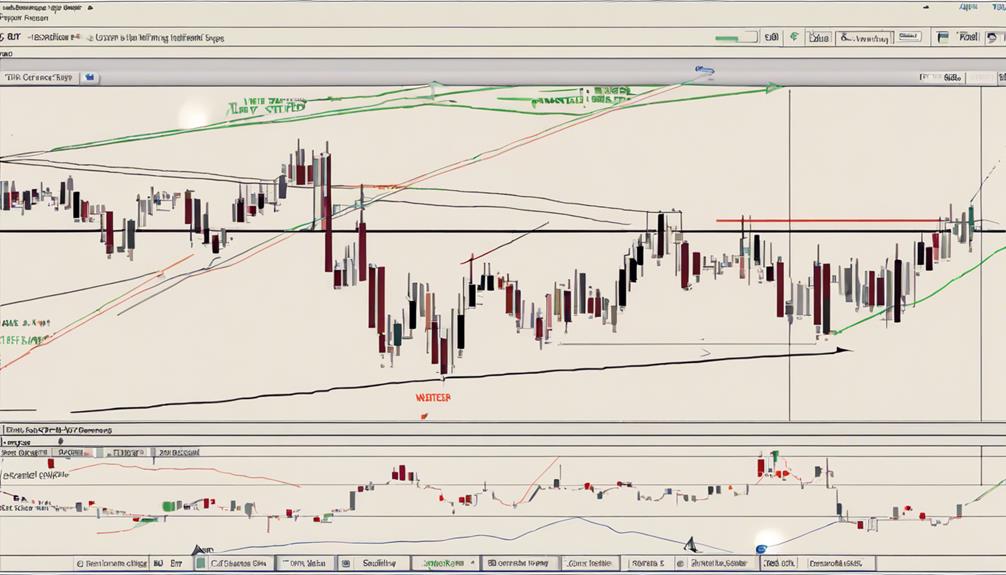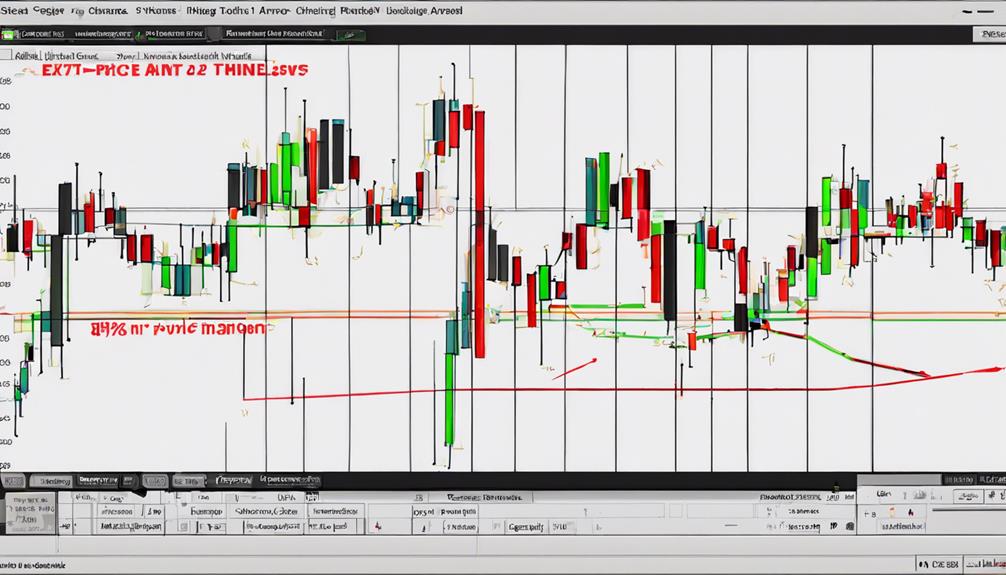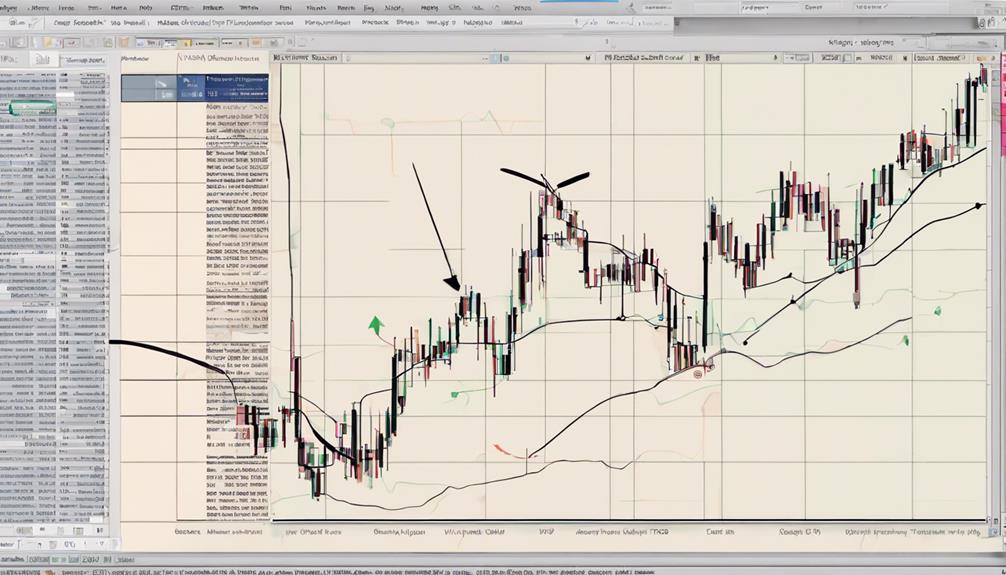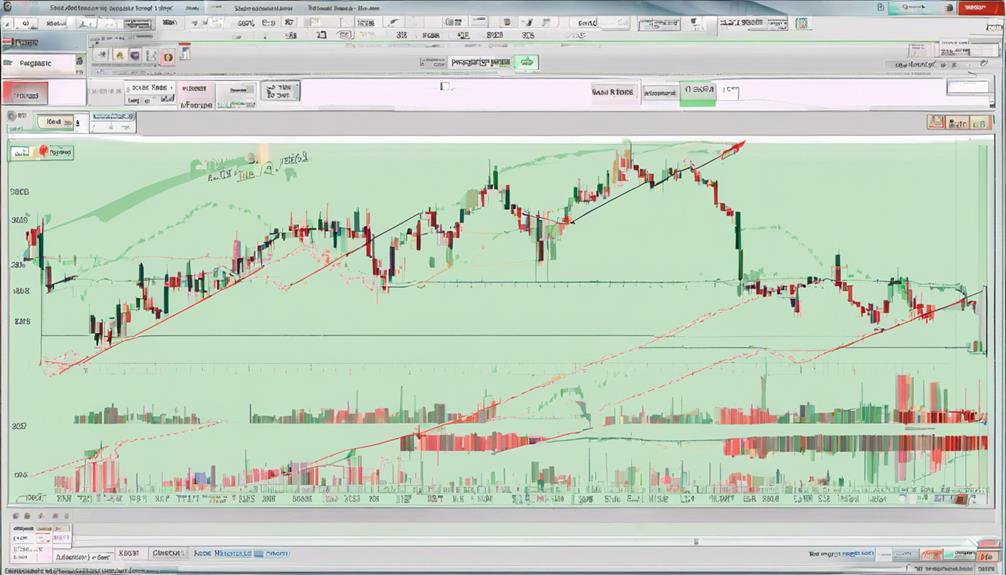Exploring the intricacies of swing trading with Keltner Channels unveils a world of strategic possibilities for traders seeking to refine their skills.
The application of these seven tips could potentially revolutionize how traders approach the market, providing them with enhanced tools for trend identification, entry and exit point precision, and risk management.
By delving into the nuances of Keltner Channels and incorporating these expert tips, traders might discover a new realm of potential profitability and improved trading performance in the dynamic landscape of swing trading.
Understanding Keltner Channels in Swing Trading
When delving into the realm of swing trading, a fundamental aspect to grasp is the intricate functionality of Keltner Channels. These channels, consisting of a middle line and upper/lower bands calculated based on the Average True Range (ATR), play a crucial role in assessing volatility and potential price trends.
One key utility of Keltner Channels is their ability to provide dynamic support and resistance levels, aiding traders in identifying optimal entry and exit points for their trades. Moreover, these channels are valuable tools for recognizing overbought or oversold conditions in the market, allowing traders to make informed decisions.
To effectively leverage Keltner Channels in swing trading, understanding how to interpret and customize them is essential. By adapting the settings of the channels based on market conditions and individual preferences, traders can tailor their strategies to suit specific trading styles and goals, enhancing overall performance and decision-making processes.
Setting Up Keltner Channels Correctly

To effectively implement Keltner Channels in swing trading, ensuring the correct setup is paramount for accurately capturing market volatility and identifying potential price trends. Setting up Keltner Channels correctly involves adjusting the ATR multiplier to determine the band distance from the 20-period EMA, providing a volatility-based price range.
Traders commonly use the 20-period EMA as the middle line to effectively capture recent price dynamics in swing trading strategies. Proper configuration of Keltner Channels aids in understanding how the bands adapt to market volatility and direction, enabling precise trend analysis.
Identifying Entry and Exit Points

In swing trading utilizing Keltner Channels, the identification of precise entry and exit points plays a critical role in maximizing trading opportunities and managing risk effectively. Entry points are often signaled by price breaking above the upper band of the Keltner channel, indicating potential buying opportunities for swing traders.
On the other hand, traders may consider exiting a trade when the price touches or crosses the upper band, suggesting overbought conditions and a possible trend reversal. Additionally, exit signals can be generated when the price touches or crosses the lower band, indicating oversold conditions and a potential exit point for short positions.
To enhance decision-making, swing traders can combine Keltner Channels with technical indicators like RSI or MACD to gain additional confirmation for their entry and exit points. Successful utilization of Keltner Channels for identifying entry and exit points requires a deep understanding of price action within the bands and the validation provided by supporting technical tools.
Leveraging Keltner Channels for Trends

Utilizing Keltner Channels as a tool for trend analysis in swing trading involves leveraging a 20-period Exponential Moving Average (EMA) as the central indicator line. This method allows traders to effectively identify trends and potential trend reversals by observing price action within the bands.
The dynamic nature of the upper and lower bands, adjusting based on the Average True Range (ATR), enables traders to adapt to changes in volatility swiftly. When using Keltner Channels for trend analysis, traders should focus on spotting price breakouts or bounces at the bands to confirm trend directions accurately.
By incorporating Keltner Channels into swing trading strategies, traders can take advantage of momentum shifts in the market and capitalize on trends more efficiently.
- Keltner Channels utilize a 20-period Exponential Moving Average (EMA) for trend analysis.
- Traders can identify potential trend reversals by observing price action within the bands.
- The upper and lower bands adjust dynamically based on Average True Range (ATR) to capture changes in volatility.
- Spotting price breakouts or bounces at the bands can help confirm trend directions effectively.
Implementing Risk Management With Keltner Channels

When considering risk management strategies within swing trading using Keltner Channels, traders can enhance their decision-making process by implementing stop-loss orders based on the distance between the entry point and the Keltner Channel bands.
By utilizing the width of the Keltner Channels, traders can gauge market volatility and adjust their position sizes accordingly to mitigate risks. This approach enables traders to protect their capital and minimize potential losses during periods of adverse price movements.
Setting a maximum risk percentage per trade relative to the channel width helps maintain consistent risk exposure and prevents significant drawdowns. Employing Keltner Channels for risk management provides a structured approach to navigating market uncertainties and unexpected price fluctuations, offering traders a systematic way to handle risk while maximizing opportunities for profitability.
Ultimately, integrating risk management techniques with Keltner Channels empowers traders to make informed decisions and safeguard their investments in the dynamic landscape of swing trading.
What Are the Best Strategies for Swing Trading With Keltner Channels?
When swing trading with Keltner Channels, it’s important to consider key tips for Keltner Channels trading. Look for the middle channel to determine the trend direction, use the outer bands for potential buy and sell signals, and consider combining Keltner Channels with other indicators for confirmation.
Frequently Asked Questions
What Is the Best Strategy for the Keltner Channel?
The best strategy for the Keltner Channel involves utilizing breakouts above or below the bands to identify buying or selling pressure. Confirming breakouts near support/resistance levels and incorporating other indicators for validation can enhance trading effectiveness.
Is Keltner Channel Strategy Profitable?
The profitability of the Keltner Channel strategy hinges on disciplined application, market analysis, and risk management. When used judiciously with other indicators, it can yield consistent profits in swing trading, showcasing its potential for success.
What Is the Most Profitable Swing Trading Strategy?
The most profitable swing trading strategy encompasses a combination of technical analysis tools, risk management practices, and market understanding. It involves identifying trends, utilizing indicators effectively, and adhering to disciplined trading principles to achieve consistent returns.
What Is the King Keltner Trading Strategy?
The King Keltner Trading Strategy combines Keltner Channels with indicators like the 20-period EMA and ATR to predict trends. It generates short-term signals using a 10-period EMA and ATR, emphasizing customized risk management for stop-loss and take-profit levels.
Conclusion
In conclusion, mastering swing trading with Keltner Channels requires understanding, setting up correctly, identifying entry and exit points, leveraging for trends, and implementing risk management.
By following these steps, traders can enhance their strategies and improve their overall trading performance.
Just as a skilled artist uses different brushes, colors, and techniques to create a masterpiece, traders can utilize Keltner Channels as a valuable tool to paint a successful trading journey.
